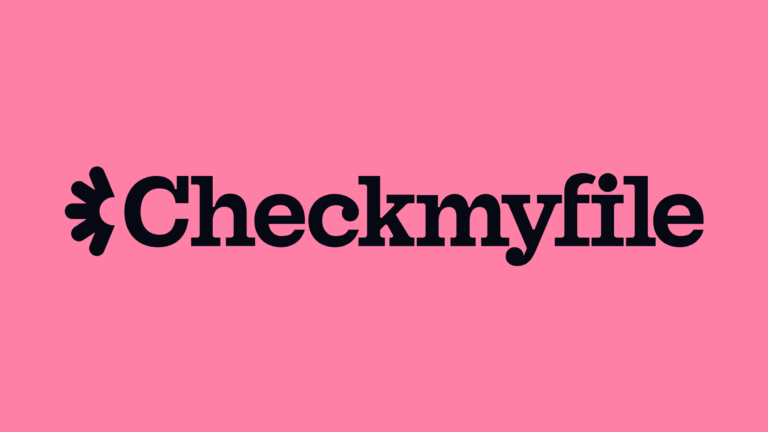Key Takeaways
- Dentists benefit from specialist mortgage products offering higher borrowing multiples—often up to 6x annual income—due to career stability and strong earnings potential.
- Flexible deposit options, including schemes with as little as 0–5% down, are available for dentists, especially those starting out or using professional-focused products.
- Complex or variable income from multiple dental roles can complicate mortgage applications; detailed financial documentation and specialist brokers can help overcome these hurdles.
- Student debt and short-term contracts may impact affordability and lender perceptions, so early financial planning is essential.
- Independent mortgage brokers provide wider access to tailored mortgage deals for dentists compared to restricted or tied brokers.
- Self-employed and locum dentists can access competitive rates with the right paperwork, but face additional scrutiny and should seek specialist advice.
Securing a mortgage as a dentist can feel more complicated than it should. Your profession puts you in a unique financial position—whether you’re self-employed, working in private practice, or part of the NHS. Many lenders don’t always recognise the nuances of dental income, especially if you have multiple sources or have recently switched to self-employment.
Fortunately, your career stability and earnings potential work in your favour. Lenders often view dentists as low-risk borrowers, which means you could access higher borrowing multiples—sometimes up to six times your annual income. You might also find more flexible terms, such as lower deposit requirements and exclusive rates, designed with professionals like you in mind.
Understanding how the mortgage market treats dentists is the first step to finding the right deal. With the right approach, you can take advantage of the benefits your profession offers and secure a mortgage that truly fits your needs.
What types of mortgages can dentists get?
Dentists can access a broad range of mortgage types, each suited to different career stages and income structures. Professional mortgages specifically designed for those in healthcare offer several tailored advantages compared to standard products.
- Professional Mortgages
Professional mortgages target dentists, and other qualified professionals. You benefit from higher loan-to-income multiples, often up to 6x your annual income. Lenders show flexibility around variable income such as overtime or locum work, considering your full earnings instead of capped amounts.
- First-Time Buyer Mortgages
First-time buyer mortgages help you purchase your first home, sometimes with deposits as low as 5%. Providers offering professional products assess your earnings and career stability, which may secure you better terms and lower fees.
- Remortgage Options
Remortgage products let you switch deals or release equity from an existing property. Professional-friendly remortgages often take variable pay into account, making it easier to access favourable rates or raise additional funds.
- Buy-to-Let Mortgages
Buy-to-let mortgages support property investment ambitions. Lenders may evaluate your total annual professional income, allowing higher borrowing amounts and leveraging your status as a low-risk borrower.
- Home Mover Mortgages
Home mover mortgages cater for when you want to upgrade or relocate. Specialist lenders may offer streamlined application processes and increased lending capacity, reflecting professional stability.
Doctors, including those new to the profession or on fixed-term contracts, often find these tailored mortgage products more accessible. Specialist brokers help you navigate lender requirements and match you with competitive products that recognise your income profile.
What dental school didn’t teach us about money
Dental schools prioritise clinical skills and patient care, but overlook teaching critical financial concepts relevant to your career. You graduate highly trained in dentistry, yet often face gaps in personal finance knowledge, including mortgage processes, income structuring, and debt management.
You don’t receive guidance on issues such as understanding your payslips, navigating self-employed income, or assembling the documents lenders expect for mortgage applications. This becomes especially relevant as you encounter fluctuating earnings, tax considerations, and multiple revenue streams from NHS and private work.
You rarely discuss student loan repayment strategies or how substantial debt from dental school—often £150,000 or more—influences your mortgage affordability. Managing this debt, while setting aside deposits and preparing for homeownership, demands a level of financial planning that traditionally goes untaught.
You may experience a lack of instruction on budgeting for irregular income, building credit, or leveraging future earning potential in mortgage negotiations. These are essential skills that play a direct role in optimising your borrowing power with lenders who offer 4.5x to 6x income multiples, especially when you can prove a strong upward income trajectory.
You inevitably encounter these knowledge gaps when progressing from dental school to property ownership. Navigating mortgage applications successfully often requires support from specialist mortgage brokers and independent research to fill in the missing financial education.
How much deposit do dentist mortgages need?
Deposit requirements for dentist mortgages differ by lender and mortgage type. You may find options that allow for a 0% deposit, particularly with certain dentist-specific mortgage programmes designed for professionals with stable careers and high earning potential. Some professional mortgage products offer low deposit terms, with minimum deposits starting at 5% or 10%. For example, you could secure mortgage approval with a deposit as low as £15,000 on a £300,000 property using a 5% scheme.
Most lenders request a minimum deposit of 10%, though offering a higher deposit often leads to more favourable rates and terms. If you provide a larger upfront amount, you could access a broader range of deals with reduced interest rates and lending fees. While mainstream mortgages often demand a higher deposit, professional mortgages for dentists include flexible options for those at earlier career stages or with limited current savings.
The table below summarises common deposit levels and features for mortgages specific to dentists:
| Deposit Percentage | Typical Feature | Example Scenario |
|---|---|---|
| 0% | 100% financing, no PMI required | Newly qualified dentist, high income potential |
| 5% | Low deposit offers on specialist professional deals | Early-career associate dentist |
| 10% | Standard minimum for broader lender acceptance | Practice owner, higher savings |
| >10% | Access to best rates and reduced monthly repayments | Experienced dentist, greater deposit available |
Deposits for dentist mortgages remain competitive compared with standard mortgage products, especially when you can demonstrate future income growth, stable employment, or access to specialist professional schemes.
How much can dentists borrow?
Mortgage lenders assess dentists using income multiples, with most offering higher borrowing limits due to the profession’s financial stability. Specialist schemes increase your maximum loan, especially if you’ve strong earnings or senior status.
Upto 6.49x mortgages – 5.5x for everyone – 6x for first time buyers
Most lenders calculate borrowing capacity for dentists using 5.5x times your proven income, with documented figures from payslips or business accounts. Specialist lenders extend up to 6 times annual earnings if you’re a senior partner, established practice owner, or present an exceptionally robust financial profile. Some lenders can even go upto 6.49x your income, however this comes with higher rates.
If you’re a first-time buyer, up to 6x your annual income is available if you are employed. More commonly, you’ll access 5.5x borrowing, provided you’ve passed standard affordability and credit checks. Self-employed dentists can access the same multiples (4.5–6x), but you’ll face more stringent reviews of income sustainability, with lenders scrutinising tax records or business accounts over multiple years.
| Borrower Type | Standard Maximum Multiple | Specialist Maximum Multiple | Common Multiple for All |
|---|---|---|---|
| Salaried Dentist | 5.5x | 6.49x | 4.5x+ |
| Self-Employed Dentist | 4.5–5.5x | 5.5x (with strong profile) | 5.5x |
| First-Time Buyer Dentist | 5.5x | 6x (case-by-case) | 5.5x |
| Senior/Partner Dentist | 6x | (capped sector-wide) | 6x |
Student debt enters affordability assessments as a monthly outgoing, though it doesn’t affect your credit scoring directly. Lenders give you, as a dental professional, access to higher income multiples than most other applicants, provided you demonstrate a stable, verifiable income.
Family Backed Mortgages
Family-backed mortgages, including guarantor and gifted deposit options, are available across the UK mortgage market, though no scheme targets dentists exclusively. These arrangements work if family members support your application by providing a gift towards your deposit or formally guaranteeing part of your borrowing.
You increase your overall borrowing capacity with family backing, but eligibility and structure depend on each lender’s general criteria—not on your profession. Lenders view dentists as low-risk, so you’ll receive standard terms available to other professionals, with family involvement improving your affordability.
Why it can be hard for a dentist to get a mortgage
Dentists face distinct barriers during mortgage applications, even with strong earning potential. Lending criteria often don’t match your career realities, so it’s vital to understand these challenges to prepare thoroughly.
High levels of student debt
Dentists typically accumulate significant student loan balances, with amounts often exceeding £60,000 upon graduation. Lenders consider these monthly repayments when calculating affordability. Your high debt-to-income ratio may restrict the maximum amount you can borrow, even if it doesn’t directly affect your credit score.
Short-term contracts
Short-term contracts and variable employment are common for early-career or associate dentists. You might work as a locum, on rolling contracts, or as a self-employed associate. Lenders who prefer steady, long-term employment can view these arrangements as less secure, requesting two or more years of accounts, though some accept a single year if you’re on an approved contract.
Complex income
Dental income can come from multiple sources—for example, NHS earnings, private work, dividends, partnership shares, and overtime. Irregular pay with bonuses, fluctuating hours, and deductions for lab fees and business expenses make your income harder to evidence. Standard lenders might undervalue your actual earnings unless you provide detailed documentation or use a broker familiar with dental finances.
A history of moving
Dentists tend to relocate during training and to take up new posts, with many moving every three years due to deanery rotations. Frequent address changes can disrupt your credit history and weaken the perceived stability that mortgage lenders look for. Multiple recent addresses may trigger extra checks and delays in the approval process.
Lack of Time
Demanding schedules leave most dentists with little time to collate documents, research mortgage options, or address lender queries. Tight deadlines and long hours can slow down application progress, especially when you need to negotiate complex income or employment issues with lenders.
What’s the difference between restricted and independent mortgage brokers?
Independent mortgage brokers give you access to the entire mortgage market, broadening your choice beyond in-house products. Their recommendations span all lenders and products available to intermediaries, which increases your chances of finding a specialist deal for dentists, such as higher income multiples or products accepting complex income—including salary, dividends, and projected earnings.
Restricted mortgage brokers only recommend mortgages from a defined panel of lenders or a single provider. For example, a broker tied to a high street bank offers only that bank’s products, limiting your options if your dental income structure or business situation falls outside their acceptance criteria.
Both independent and restricted brokers are regulated by the Financial Conduct Authority and must declare their broker status in writing. The following table details key differences:
| Broker Type | Product Range | Best For | Regulation |
|---|---|---|---|
| Independent | Whole of market | Maximum choice, specialist niches | FCA-regulated (Level 4) |
| Restricted/Tied | Limited providers | Convenience, in-house deals | FCA-regulated (Level 4) |
You benefit from independent advice when your application involves variable dental income, business ownership, or non-standard employment terms. Restricted brokers might offer convenience but may not access deals designed specifically for dentists. If you want the broadest range of competitive mortgage options tailored to your circumstances as a dentist, working with an independent mortgage broker allows for more flexible lending solutions.
What about locum and self-employed dentists?
Locum and self-employed dentists encounter unique mortgage criteria linked to variable and irregular income streams. Lenders typically assess your application using similar income multiples to salaried dentists—often between 4.5 and 6 times yearly profit—if your financial documentation demonstrates stable earnings. Bank statements, tax returns, and business accounts covering 2–3 years of trading history are required to prove income; gaps or recent transitions between types of self-employment can prompt additional scrutiny.
Locum dentists, treated as self-employed by most lenders, must provide evidence that contract work and day rates generate a consistent annual income. Lenders consider your track record, regularity of new contracts, and duration within dental locum work. Reliable documentation of sustained contracts or assignment history increases your chance of approval on standard or enhanced terms.
Self-employed or locum status creates more frequent queries around income consistency, especially if your take-home earnings fluctuate due to private practice receipts or NHS contracts. Lenders often exclude short-term spikes or unproven revenue sources, focusing on your average income over the most recent tax years. Significant student debt reduces your assessed affordability, lowering the amount you can borrow.
Specialist mortgage brokers facilitate access to lenders who understand dental professionals’ variable earnings and can match you with mortgage products tailored to fluctuating income. By preparing detailed financial records and demonstrating clear evidence of ongoing income generation, you maximise your borrowing potential and access competitive rates suited for dental professionals in locum or self-employed roles.
Help for first time buyers
Getting a mortgage as a dentist can feel overwhelming but you’re not alone. With the right advice and a clear understanding of your options you’ll be in a strong position to secure a deal that matches your career and financial goals.
Specialist brokers and tailored mortgage products are there to help you overcome the hurdles unique to your profession. Take the time to explore what’s available and don’t hesitate to ask questions—your future home is closer than you think.
Frequently Asked Questions
Why do dentists face unique challenges when applying for a mortgage?
Dentists often have multiple income sources, variable contracts or are newly qualified, which can make it harder for lenders to accurately assess their financial stability. Many lenders do not fully understand the way dental income works, so it’s important to find a lender or broker experienced in working with dentists.
Are specialist mortgages available for dentists in the UK?
Yes, there are professional mortgage products specifically designed for dentists and other healthcare professionals. These often offer higher loan-to-income multiples, flexible criteria for variable income, and lower deposit requirements than standard mortgages.
How much can a dentist borrow on a mortgage?
Most lenders offer dentists up to 5.5 times their proven income, while specialist lenders may consider up to 6 times income—especially for senior partners or practice owners. First-time buyers and self-employed dentists may qualify for these multiples with the right documentation.
What deposit do I need for a dentist mortgage?
Deposit requirements for dentist mortgages can range from as little as 0% (through specific schemes) up to 10% or higher for standard deals. Many dentist-specific mortgages start at a 5% deposit, and a higher deposit can help secure better rates.
Can self-employed and locum dentists get mortgages?
Yes, self-employed and locum dentists can get mortgages, but lenders will require 2–3 years of financial records, such as tax returns and bank statements, to demonstrate stable income. Specialist brokers can help present your income clearly to lenders.
How does student debt affect a dentist’s mortgage application?
High student debt may impact affordability calculations but does not automatically disqualify you. Lenders consider overall financial stability, future earning potential, and other debts when assessing your application.
What are the benefits of using a specialist mortgage broker as a dentist?
Specialist and independent mortgage brokers understand the complexities of dental income and have access to a wider range of lenders. They can help you find the most competitive deals that fit your unique circumstances, increasing your chances of mortgage approval.
Do first-time buyer dentists have access to special mortgage schemes?
Yes, first-time buyer dentists can access mortgages with lower deposit requirements or family-backed options like guarantor or gifted deposit arrangements. Some lenders offer up to 6 times income for first-time buyers in the dental profession.
Is having irregular or variable income a problem when applying for a mortgage as a dentist?
Irregular or variable income can complicate your application, but many lenders—particularly those specialising in professional mortgages—understand this and can offer tailored options if you provide comprehensive income evidence.
What documents do I need to provide for a dentist mortgage application?
You’ll typically need proof of income (payslips, tax returns, or business accounts for self-employed), bank statements, proof of deposit, photo ID, and details of outstanding loans or debts. Locum and self-employed dentists should prepare several years’ worth of accounts.
Why not see if you can get moving quicker? Tap here for your free initial consultation.









